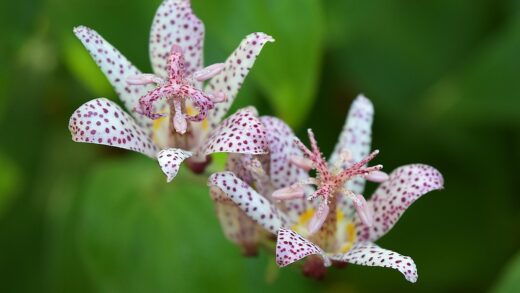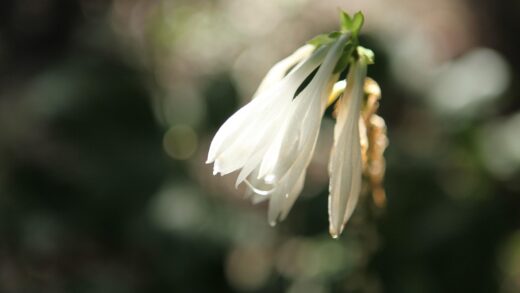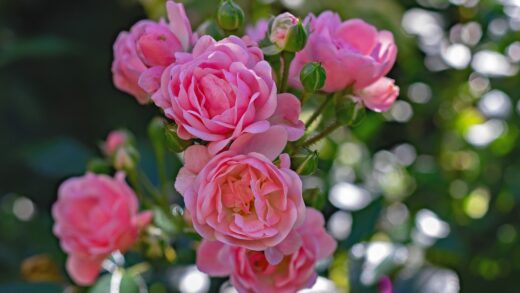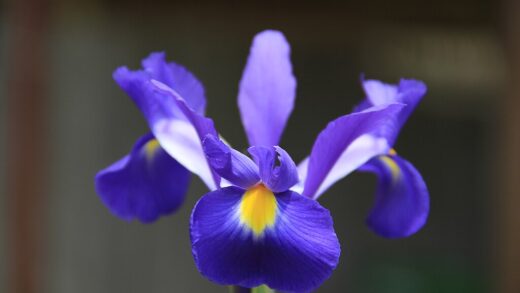Successfully establishing Caryopteris in the garden begins with proper planting techniques, which lay the foundation for a healthy and vigorous shrub. The ideal time to plant bluebeard is in the spring, after the last frost has passed, or in the early autumn. Spring planting allows the shrub the entire growing season to establish its root system before the onset of winter, while early autumn planting in milder climates gives it a head start for the following spring. It is crucial to select a healthy plant from the nursery, one with green, vibrant foliage and no signs of disease or pest damage. Proper site preparation is equally important, ensuring the chosen location meets the plant’s requirements for sunlight and, most critically, excellent soil drainage.
The first step in the planting process is to prepare the planting hole. This should be dug to be approximately twice as wide as the plant’s root ball but no deeper. Making the hole wider allows the roots to easily penetrate the surrounding soil as they expand. It is important not to dig the hole deeper than the root ball, as this can cause the plant to settle over time, sinking too deep into the ground, which can lead to crown rot. Once the hole is dug, it is a good time to amend the backfill soil if necessary. For heavy clay soils, mixing in compost or other organic matter will improve its structure and drainage.
When you are ready to place the plant in the hole, carefully remove it from its container. If the plant is root-bound, with roots circling tightly around the root ball, it is essential to gently tease them apart or make a few vertical cuts with a sharp knife. This encourages the roots to grow outwards into the new soil rather than continuing to circle, which can inhibit the plant’s establishment. Place the plant in the center of the hole, ensuring that the top of the root ball is level with or slightly above the surrounding ground level. Planting too deep is a common mistake that can be fatal for Caryopteris.
After positioning the plant, backfill the hole with the amended soil, gently firming it around the root ball to eliminate any large air pockets. Avoid compacting the soil too heavily, as this can impede water and air movement. Once the hole is filled, create a small berm or basin of soil around the perimeter of the planting area to help direct water to the roots. Water the newly planted shrub thoroughly, allowing the water to soak in deeply and settle the soil. This initial watering is critical for establishing good contact between the roots and the soil.
Preparing the ideal planting site
The success of a Caryopteris shrub is largely determined before it even goes into the ground. Site preparation is a critical phase that addresses the plant’s fundamental needs for sunlight, soil type, and space. The primary consideration is sunlight; bluebeard is a sun-worshipper and requires a location that receives at least six hours of direct sun each day. Without adequate sun, the plant’s growth will be weak and spindly, and its flowering will be significantly diminished. Therefore, a careful assessment of the garden’s light patterns throughout the day is an essential first step.
More articles on this topic
The second, and arguably most important, aspect of site preparation is ensuring proper soil drainage. Caryopteris is native to regions with gritty, less fertile soils and is extremely intolerant of waterlogged conditions. Before planting, the drainage of the proposed site must be evaluated. A simple percolation test can be performed by digging a hole about 30 centimeters deep and filling it with water. If the water has not drained away within a few hours, the site has poor drainage and will need to be amended. Ignoring this step is the most common reason for failure with this plant.
To improve drainage in heavy clay or compacted soils, several amendments can be incorporated. The most effective method is to mix generous amounts of organic matter, such as compost, leaf mold, or well-rotted pine bark, into the soil over a wide area, not just in the planting hole itself. This creates a transition zone for the roots to grow into. For extremely heavy soils, adding inorganic materials like coarse sand or pea gravel can also help to create more air pockets and improve water flow. In some cases, planting on a slight mound or in a raised bed is the best solution to ensure the roots are never sitting in water.
Finally, consider the mature size of the specific Caryopteris variety being planted. While they are generally compact shrubs, it is important to provide enough space for them to grow to their full potential without being crowded by neighboring plants. Good air circulation is key to preventing fungal diseases, and overcrowding can inhibit this. Clearing the area of weeds and other competing vegetation before planting will also give the new shrub the best possible start, reducing competition for water and nutrients as it becomes established in its new home.
Step-by-step planting guide
Planting Caryopteris is a straightforward process when the site has been properly prepared. The best times to plant are in the spring or early autumn, avoiding the stress of extreme summer heat. Begin by watering the plant thoroughly in its nursery pot an hour or so before you plan to plant it. This ensures the root ball is well-hydrated, which can reduce the shock of transplanting. Having all your tools and any necessary soil amendments ready will make the process smooth and efficient.
More articles on this topic
Dig a hole that is at least twice the diameter of the container but equal in depth. The width of the hole allows the roots to easily spread into the surrounding soil, while maintaining the depth prevents the shrub from settling too low. Place the soil you remove on a tarp or in a wheelbarrow, where you can easily mix in any amendments like compost if your soil is heavy or poor. This amended soil will be used to backfill around the plant. It is crucial to resist the urge to put amendments only at the bottom of the hole, as this can create a “bowl” effect that holds water.
Carefully slide the Caryopteris out of its pot, supporting the base of the plant. Inspect the root system; if the roots are densely packed and circling, it is important to gently loosen them with your fingers or a small hand tool. This action encourages the roots to grow outward into the new environment. Set the plant in the center of the hole, checking the depth. The top of the root ball should be flush with or even slightly higher than the surrounding soil level. Use a straight edge like a shovel handle placed across the hole to accurately gauge the correct height.
Once the plant is positioned correctly, begin backfilling the hole with the prepared soil. Gently firm the soil around the root ball with your hands to eliminate large air pockets, but do not stomp on it, as this can over-compact the soil. After the hole is filled, use the excess soil to build a shallow ridge, or watering berm, around the edge of the planting hole. This will help to contain water and direct it to the root zone during the establishment period. The final step is to water the plant slowly and deeply, letting the water fully saturate the root ball and the surrounding soil.
Propagation through cuttings
Propagating Caryopteris from cuttings is a reliable and popular method for creating new plants that are genetically identical to the parent. The best time to take these cuttings is in the late spring or early summer when the plant has produced plenty of new, semi-ripe growth. This type of wood is ideal because it is mature enough to be firm but still young enough to root readily. Look for healthy, vigorous stems that are free from any signs of pests, diseases, or flowers.
To take a cutting, select a non-flowering shoot and, using a clean, sharp knife or pruning shears, cut a section that is about 10 to 15 centimeters long. The cut should be made just below a leaf node, which is the point on the stem where a leaf or bud emerges. Carefully remove the leaves from the lower half of the cutting, leaving just two or three pairs of leaves at the top. Removing the lower leaves prevents them from rotting when the cutting is placed in the rooting medium and reduces water loss through transpiration.
While not strictly necessary, dipping the cut end of the stem into a rooting hormone powder can significantly increase the success rate and speed of root development. The hormone encourages the formation of new roots from the cut surface. Tap off any excess powder, as too much can be counterproductive. The cuttings should then be inserted into a pot or tray filled with a sterile, well-draining rooting medium, such as a mix of perlite and peat moss or coarse horticultural sand. Insert the cuttings about one-third of their length deep into the medium.
To create a humid environment that promotes rooting, cover the pot with a clear plastic bag or place it in a propagator. It is important to ensure the leaves do not touch the plastic. Place the cuttings in a warm location with bright, indirect light, avoiding direct sun which can scorch them. Keep the rooting medium consistently moist but not saturated. Roots should begin to form within a few weeks. You can check for rooting by gently tugging on a cutting; if you feel resistance, roots have formed. Once a healthy root system has developed, the new plants can be potted up individually to grow on.
Propagation from seed
Growing Caryopteris from seed is another viable method of propagation, although it may not always produce plants that are true to the parent variety, especially if it is a named cultivar. Seeds can be collected from the plant in the autumn after the flower heads have dried and turned brown. The small seeds can be shaken from the dried calyces and stored in a cool, dry place until you are ready to sow them. This method can be a rewarding way to produce a large number of plants, albeit with some potential for variation in the offspring.
The optimal time to sow Caryopteris seeds is in the late winter or early spring, typically about six to eight weeks before the last expected frost date. The seeds require a period of cold stratification to break dormancy and ensure good germination rates. This can be achieved by mixing the seeds with a small amount of moist sand or vermiculite, placing them in a sealed plastic bag, and storing them in the refrigerator for about 30 days. This process mimics the natural winter conditions that the seeds would experience outdoors.
After the stratification period, the seeds can be sown in trays or pots filled with a sterile, fine-textured seed-starting mix. Lightly press the seeds onto the surface of the soil, but do not cover them with much soil, as they require light to germinate. Gently water the medium from below or use a fine mist to avoid dislodging the seeds. Cover the container with a clear plastic dome or bag to maintain high humidity and place it in a warm location with plenty of bright, indirect light.
Germination can be expected within two to four weeks under ideal conditions. Once the seedlings have emerged, remove the plastic cover to increase air circulation and prevent fungal diseases like damping off. When the seedlings have developed their first set of true leaves and are large enough to handle, they can be carefully transplanted into individual small pots. Continue to grow them in a bright, sheltered location, gradually acclimatizing them to outdoor conditions before planting them in their final garden positions after all danger of frost has passed.
📷Agnieszka Kwiecień, Nova, CC BY-SA 4.0, via Wikimedia Commons


















